 Issue 8 is now available online, and the front cover features a HOT communication from Sungyoung Choi, Jeffrey M. Karp and Rohit Karnik at the Massachusetts Institute of Technology, Cambridge, USA. The article demonstrates the group’s use of deterministic cell rolling to sort cells in a label-free, gentle manner.
Issue 8 is now available online, and the front cover features a HOT communication from Sungyoung Choi, Jeffrey M. Karp and Rohit Karnik at the Massachusetts Institute of Technology, Cambridge, USA. The article demonstrates the group’s use of deterministic cell rolling to sort cells in a label-free, gentle manner.
Cell sorting by deterministic cell rolling
Sungyoung Choi, Jeffrey M. Karp and Rohit Karnik
DOI: 10.1039/C2LC21225K
The inside front cover features a HOT paper from Chang Lu and colleagues, which outlines the group’s use of total internal reflection fluorescence flow cytometry (TIRF-FC) to quantitatively measure quantum dot uptake into cells at a single cell level.

Quantitative measurement of quantum dot uptake at the cell population level using microfluidic evanescent-wave-based flow cytometry
Jun Wang, Yihong Zhan, Ning Bao and Chang Lu
DOI: 10.1039/C2LC21298F
Other HOT papers in the issue include:
Microfluidics meets soft layer-by-layer films: selective cell growth in 3D polymer architectures
Narayanan Madaboosi, Katja Uhlig, Stephan Schmidt, Magnus S. Jäger, Helmuth Möhwald, Claus Duschl and Dmitry V. Volodkin
DOI: 10.1039/C2LC40058H
Gene-Z: a device for point of care genetic testing using a smartphone
Robert D. Stedtfeld, Dieter M. Tourlousse, Gregoire Seyrig, Tiffany M. Stedtfeld, Maggie Kronlein, Scott Price, Farhan Ahmad, Erdogan Gulari, James M. Tiedje and Syed A. Hashsham
DOI: 10.1039/C2LC21226A
DNA electrophoresis in a nanofence array
Sung-Gyu Park, Daniel W. Olson and Kevin D. Dorfman
DOI: 10.1039/C2LC00016D
Also in this issue is the ninth instalment of our Acoustofluidics series – this issue’s article focuses on the design, construction and applications of planar resonant devices for acoustic manipulation of particles and cells.
Acoustofluidics 9: Modelling and applications of planar resonant devices for acoustic particle manipulation
Peter Glynne-Jones, Rosemary J. Boltryk and Martyn Hill
DOI: 10.1039/C2LC21257A
Finally, this issue sees the start of a new Focus article series from Tony Jun Huang that will discuss bio-related issues that impact on lab on a chip and microfluidic research. The first article focuses on microfluidic devices for diagnostics in the developing world.
Microfluidic diagnostics for the developing world
Xiaole Mao and Tony Jun Huang
DOI:10.1039/C2LC90022J
Read the rest of issue 8 now!
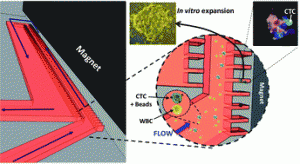 An article recently published in Lab on a Chip on the capture and culture of rare circulating tumour cells from Donald Ingber and Joo Kang has featured on CNET and PhysOrg. The device, which the team describes as a ‘micromagnetic-microfluidic device’ is capable of separating almost 90% of circulating tumour cells from blood by binding them to magnetic beads. Due to the design of the channels in the device, the CTCs remain viable following isolation and can be used further for culture and testing.
An article recently published in Lab on a Chip on the capture and culture of rare circulating tumour cells from Donald Ingber and Joo Kang has featured on CNET and PhysOrg. The device, which the team describes as a ‘micromagnetic-microfluidic device’ is capable of separating almost 90% of circulating tumour cells from blood by binding them to magnetic beads. Due to the design of the channels in the device, the CTCs remain viable following isolation and can be used further for culture and testing.













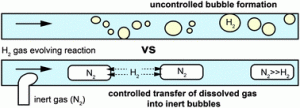




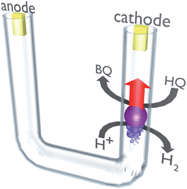 Gabriel Loget and Alexander Kuhn report for the first time the vertical propulsion of conducting beads in liquid filled capillaries by bipolar electrochemistry. Using a conical capillary a Yo-Yo type motion can be induced, making the concept then useful for cargo-lifting and of potential interest for microfluidic applications in lab-on-a-chip devices.
Gabriel Loget and Alexander Kuhn report for the first time the vertical propulsion of conducting beads in liquid filled capillaries by bipolar electrochemistry. Using a conical capillary a Yo-Yo type motion can be induced, making the concept then useful for cargo-lifting and of potential interest for microfluidic applications in lab-on-a-chip devices.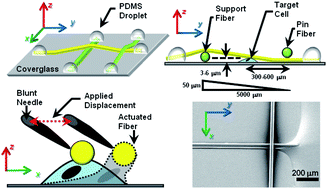 Philip LeDuc and colleagues from Carnegie Mellon University report the development of a minimal-profile, three-dimensional (MP3D) experimental microdevice which confines cells to a single focal plane, allowing observation with conventional epifluorescent microscopy.
Philip LeDuc and colleagues from Carnegie Mellon University report the development of a minimal-profile, three-dimensional (MP3D) experimental microdevice which confines cells to a single focal plane, allowing observation with conventional epifluorescent microscopy.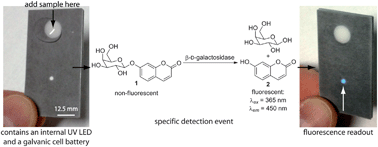
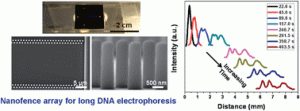
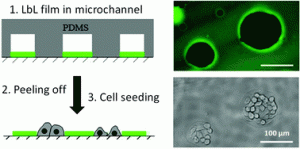
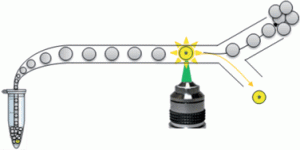

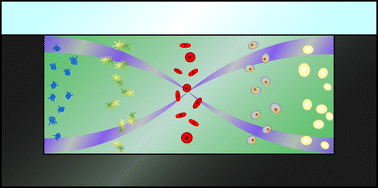 We’ve now published the 8th article is our
We’ve now published the 8th article is our 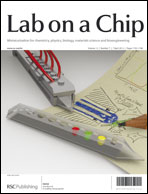 Issue 7 is now available online, and the outside front cover features a HOT article by Aldo Jesorka and colleagues at Chalmers University of Technology, describing their use of a hydrodynamically confined microflow pipette as an optimized non-contact open-volume microfluidic tool, to overcome the common restriction of using closed microchannels.
Issue 7 is now available online, and the outside front cover features a HOT article by Aldo Jesorka and colleagues at Chalmers University of Technology, describing their use of a hydrodynamically confined microflow pipette as an optimized non-contact open-volume microfluidic tool, to overcome the common restriction of using closed microchannels. The inside front cover is a Critical Review by David Beebe et al., discussing the use of PDMS and polystyrene by researchers working at the interface of microfluidics and cell biology research:
The inside front cover is a Critical Review by David Beebe et al., discussing the use of PDMS and polystyrene by researchers working at the interface of microfluidics and cell biology research: